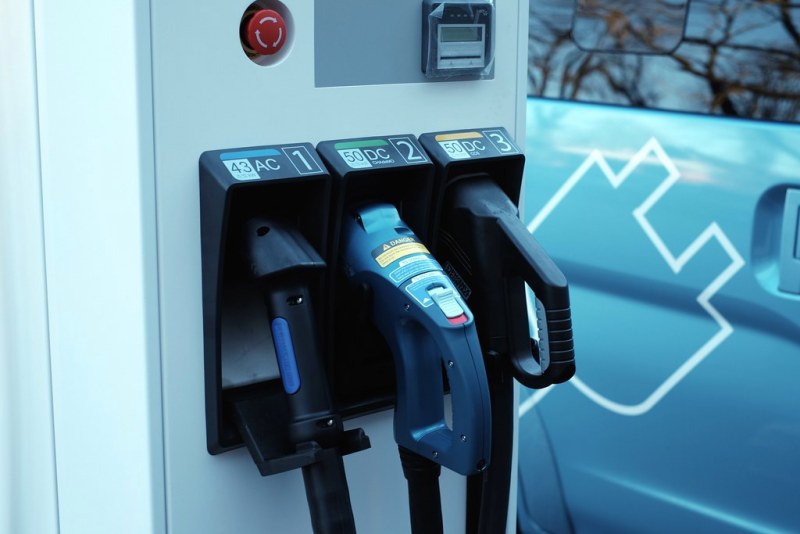The automobile industry has long benefitted from government subsidy and prioritization. Yet even as automobiles continue to damage our cities, pollute our air and kill and main our neighbors, Big Auto is once again enjoying massive government largesse: the infrastructure bill that was recently signed into law by President Biden is the largest government investment in the auto industry since the Eisenhower interstate system was built in the 1950s and ’60s.
Massive federal grants are allocated to States to build electric vehicle charging infrastructure that will facilitate sales of electric cars by reducing “range anxiety.”
Yet why is no one considering what the rest of us are suffering from: “Car anxiety.”
The bill seeks to slowly decarbonize the transportation sector, which generates 30 percent of emissions. It is a goal we all support, but the question remains regarding the best way to achieve that goal.
Wrapped in a green mantle, politicians, cities and states gloss over the fact that an electric car is still a car. It can be as large as an SUV, uses the same space as 15 pedestrians, gridlocks intersections, goes as fast as the driver wants. Roughly 40,000 people are killed every year in this country in car crashes.
The electric label seeks to make car driving virtuous, but such vehicles weigh hundreds if not thousands more pounds than “regular” cars or SUVs. As a result, the epidemic of traffic deaths and injuries will accelerate just as it did with the adoption of SUVs that now outnumber regular cars on the road.
Worse, states and municipalities are racing to grab federal dollars to install Level 2 chargers — an already-obsolete technology that takes eight hours to fully charge car. The city Department of Transportation is using public space to install 124 of those on sidewalks and 10,000 more are on the way. Gov. Hochul just announced the installation of 300 chargers for municipal fleets. This is equivalent to a gas pump on the sidewalk, only it takes eight hours to fill up.
Yet according to DOT ‘s first ever pedestrian mobility plan, most sidewalks in the city do not provide enough space for the volume of pedestrians and commuters. The problem is so acute that the Department of Sanitation started a pilot to free up pedestrian space by clearing curbs of garbage. Activists have spent the last 30 years reclaiming space from the automobile, yet our successes are still marginal. The tsunami of electric chargers threatens to reverse those meager gains.
The hidden impact of such decisions will be felt for years and hinder the effort to reduce driving: chargers will enshrine the use of the curb for free parking, and will make it more difficult and expensive to expand sidewalks, bike lanes and bus lanes in the future.
Owning a car is a private transaction. Why does it warrant government subsidies beyond the generous free parking and free roads already in existence? Private gas/charge stations, with multiple chargers that require few minutes to fully charge a car is a proven model. Revel has already opened a hub in Brooklyn with Level 3 fast charging stations and is planning one in each borough. There are many of them already installed in Europe. The incentives should go to such efforts and not in expanding the public space dedicated to the automobiles.
Electrifying the fleet is critical, but it is only part of the solution. Reducing driving with congestion pricing that boosts transit is the holistic approach to reducing not only emissions but gridlock, honking, injuries, and worst of all, death, which is far too common on city streets. There are roughly 280 reported crashes every day in New York City, according to city stats.
Sadly, no one is giving away 10,000 bikes.
If New York was a city that planned for the future, it would provide electric incentives to roll out more buses, Citi Bike stations, and Level 3 chargers. We’d proudly reduce the size of the municipal fleet before electrifying it. And we must improve transit.
If the city must install charging infrastructure on sidewalks, then widening of sidewalks, building bike lanes and bus lanes, as well as a public review, should be required before installing any curbside charger.
There’s an opportunity to get something significant correct for generations to come given the free-flowing infrastructure dollars from the federal government. We’ve put cars before anything else outside for nearly a century. Driving is not equitable and shouldn’t be made more convenient. Let’s put people safety and the environment first: hubs for charging, shrink municipal fleets, prioritize pedestrians, cyclists, and transit infrastructure before all else. Then watch the city thrive.
Christine Berthet is the co-founder of CHEKPEDS, the Chelsea-Hells Kitchen pedestrian advocacy group.






